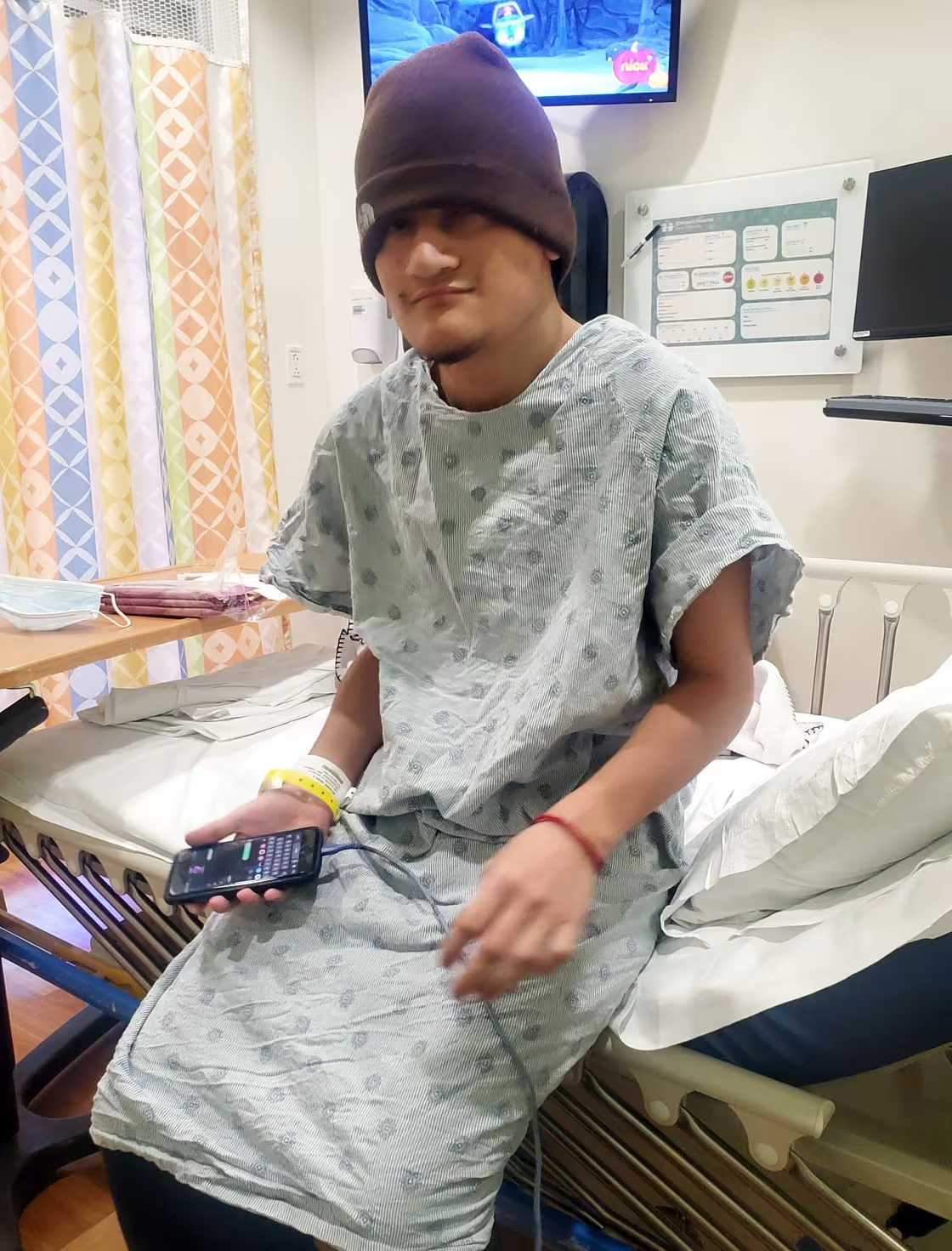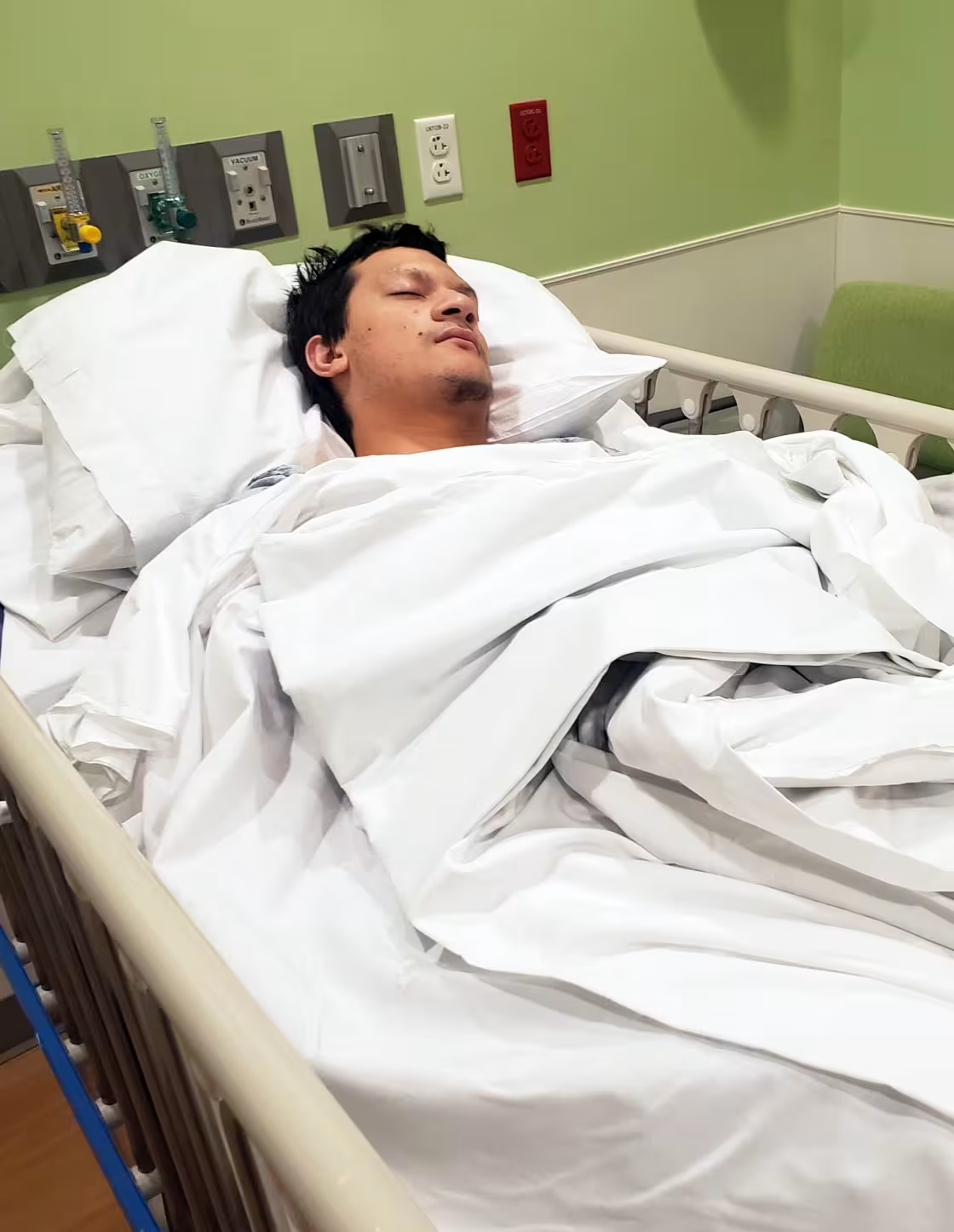Fitness
Boy diagnosed with testicular cancer at 16 recalls early symptom: ‘I thought it was normal’

In summer 2020, Ronal Salvador, then 16 and a high school junior, noticed a lump on one of his testicles.
“I didn’t think much of it,” Salvador, now 21 of New Orleans, tells TODAY.com. “It was just getting bigger.”
As it grew, he worried that the mass was a sign something was seriously wrong. In the fall, he asked his mom about it, and she examined it. Concerned, she took Salvador to a hospital, and he eventually learned that he had stage 1 testicular cancer. He’s sharing his story so other young people with cancer feel less alone.
“Maybe someone will relate to it,” Salvador says. “Maybe somebody will find hope in my story.”
A lump that keeps growing
Over the summer of 2020, Salvador noticed the bump but thought his body had just changed.

“I thought it was normal,” he says. Then it began growing, and he became worried. In October, he mentioned it to his mom, who believed they should visit the hospital.
“They did some scans. They did some checks,” Salvador recalls. “They said, ‘Yes, this is cancerous.’”
The doctors recommended removing both testicles, but Salvador’s mother balked at this. She hoped to someday have grandchildren and thought that this plan was too aggressive for her teen son. The two visited a doctor at Children’s Hospital of New Orleans for a second opinion. Doctors there shared some welcome news.
“They were like, ‘OK, we’re going to do the best to save one (testicle),’” Salvador recalls. “But the other one definitely has to come out.”
The doctor removed the testicle and several lymph nodes during surgery and diagnosed Salvador with stage 1 rhabdomyosarcoma, a type of soft tissue cancer that can occur in connective tissue or muscle, according to the National Cancer Institute.
“The biggest surgery was the one where they took out my lymph nodes,” he says. “They opened up the whole chest area, stomach area.”
Following that surgery, Salvador underwent radiation for a month and then eight months of chemotherapy with infusions once a week. Treatment felt tough at times.
“I lost my hair. I was nauseous,” he says. “I was pretty weak.”
Following the completion of chemotherapy, Salvador was cancer free. He had another surgery where they gave him a prosthetic testicle. While going through cancer treatment as a teen felt difficult, he was able to enjoy his final year in high school.
“(My) hair grew back,” he says. “My late senior year, everything went back to normal.”
Testicular cancer
While Salvador’s cancer grew in his testicle, it’s not the same type of cancer often associated with testicular cancer diagnosis, such as the type that Lance Armstrong had, Dr. Pinki Prasad, oncologist and hematologist at Children’s Hospital New Orleans and one of Salvador’s doctors, tells TODAY.com.
“Ronal actually had a type of sarcoma, rhabdomyosarcoma, that can be found very often in the … testicular region,” she explains, adding that it’s more common in children than adults.

This type of cancer doesn’t have many noticeable symptoms other than a lump on the testicles — “usually painless, but it’s a bump that gets bigger with time and doesn’t get better,” Prasad says. “Sometimes it will be painful, and that’s what brings this to (their) attention.”
She estimates that, in 90% of cases of testicular rhabdomyosarcoma, a lump is the only sign. Prasad adds that “very rarely do we see pain with urination, blood in the urine.”
While Prasad says all pediatric cancers are considered rare, including testicular rhabdomyosarcoma, she urges boys to be aware of their bodies and say something if they notice any changes.
“Once they hit puberty, they should be checking their testicles at least once a month,” she says. “No one is going to know outside of them if there’s any changes, and so it’s really important for them to get used to knowing what’s normal for them.”
Treatment for testicular rhabdomyosarcoma includes surgery to remove the testicle with the cancer and lymph nodes, which can be followed by radiation and chemotherapy.
Like any cancer, patients diagnosed with rhabdomyosarcoma in early stages have good outcomes with lower risk of recurrence. Still, Prasad says doctors closely monitor people for several years.
“They resume their normal lives pretty quickly. They go back to school. They do all the things they want to do,” she says. “We do follow them for a very indefinite amount of time, and most of these patients are survivors.”
With testicular cancer, people often feel hesitant to share symptoms with their family or doctor.
“There is a stigma,” Prasad says. “Most of these patients who have some sort of a testicular tumor do end up having a testicle removed, which can lead to some body issues.”
Prasad notes that prosthetic testicles are available, and more than half of her patients opt to have one.

College and beyond
For years, Salvador hoped to become a doctor. After graduating from high school, he started college and is studying pre-med.
“I want to be a cardiologist,” he says. “When I was younger, I used to have a lot of heart issues, and I used to always see cardiologists. They always looked so happy.”
This summer, Salvador plans to work at his family’s business and read for fun. He hopes his story encourages others to be aware of their health.
“It’s important for everybody to learn about their bodies, how to examine it on their own,” he says. “It’s important to know how to take care of yourself.”
This article first appeared on TODAY.com. Read more from TODAY here:










